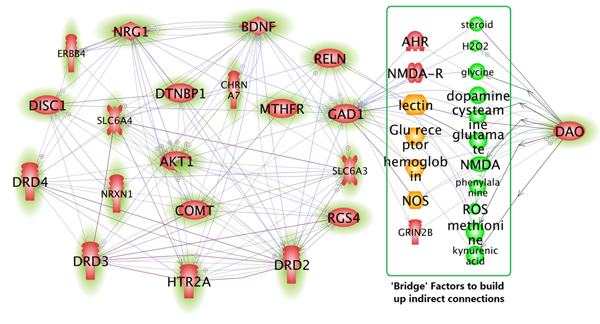

Grassberger, “ Event synchronization: A simple and fast method to measure synchronicity and time delay patterns,” Phys. Apkarian, “ Scale-free brain functional networks,” Phys. Schellnhuber, “ Network-based forecasting of climate phenomena,” Proc. Kurths, “ Complex networks reveal global pattern of extreme-rainfall teleconnections,” Nature 566, 373– 377 (2019). Stefanovska, “ Coupling functions: Universal insights into dynamical interaction mechanisms,” Rev. Lehnertz, “ Distinguishing between direct and indirect directional couplings in large oscillator networks: Partial or non-partial phase analyses?,” Chaos 26, 093106 (2016). Kurths, “ The backbone of the climate network,” Europhys. Havlin, “ Climate networks around the globe are significantly affected by El Niño,” Phys. Sporns, “ Complex brain networks: Graph theoretical analysis of structural and functional systems,” Nat.
#FUNCTIONAL NETWORK ANALYSIS DEFINITION SERIES#
Kurths, “ Complex network approaches to nonlinear time series analysis,” Phys. Newman, “ The structure and function of complex networks,” SIAM Rev. Hwang, “ Complex networks: Structure and dynamics,” Phys. In general, our approach leads to a significant reduction in the number of indirect connections and thereby contributes to a better understanding of the alpha band desynchronization phenomenon in the EO state. In the EC state, connections in the frontal parts of the brain are enhanced as compared to the EO state, while the opposite applies to the posterior regions. Specifically, we find that direct connections typically correspond to close spatial neighbors while indirect ones often reflect longer-distance connections mediated via other brain regions. Subsequently, we apply our partial event coincidence analysis to multi-channel EEG recordings to investigate possible differences in coordinated alpha band activity among macroscopic brain regions in resting states with eyes open (EO) and closed (EC) conditions. Using coupled chaotic systems and stochastic processes on two generic coupling topologies (star and chain configuration), we demonstrate that the proposed methodology allows for the correct identification of indirect interactions. In order to properly distinguish such direct and indirect links for the special case of event-like data, we present here a new generalization of event coincidence analysis to a partial version thereof, which is aimed at excluding possible transitive effects of indirect couplings. In this context, the widespread use of bivariate statistical association measures often results in a false identification of links because strong similarity between two time series can also emerge without the presence of a direct interaction due to intermediate mediators or common drivers. Correctly identifying interaction patterns from multivariate time series presents an important step in functional network construction.


 0 kommentar(er)
0 kommentar(er)
